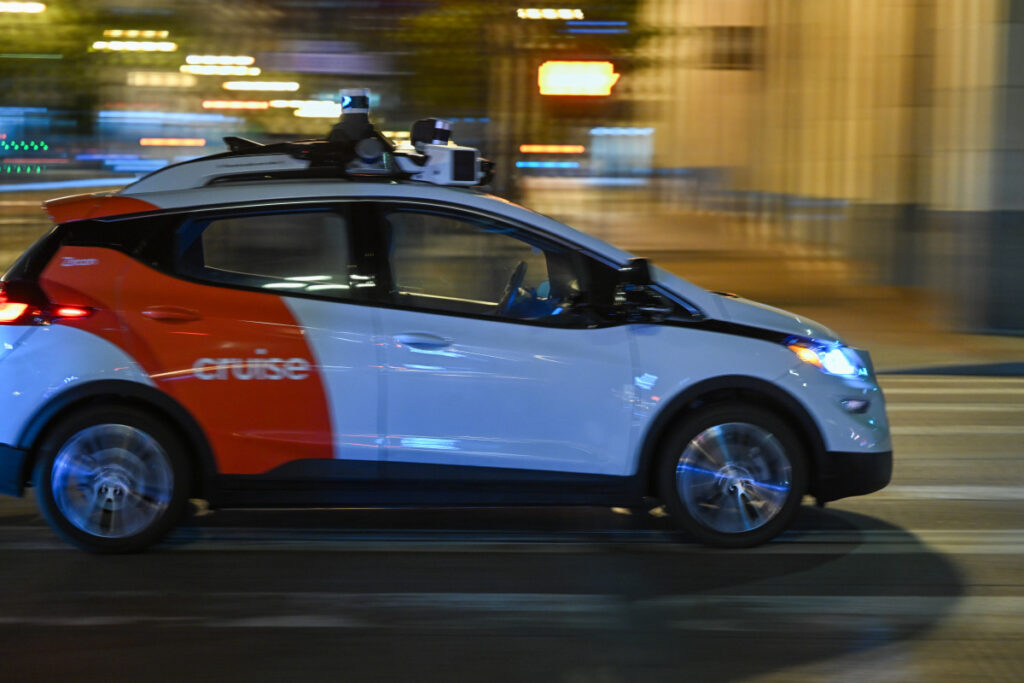The robotaxi market took a sharp turn this week as an industry leader made a shocking announcement.
General Motors (GM) , once hailed as a formidable rival for Tesla (TSLA) in the race to roll out a driverless car ahead of competitors, recently announced that it will be ending its Cruise robotaxi division, the company’s venture into self-driving, ride-sharing technology.
Don’t miss the move: SIGN UP for TheStreet’s FREE daily newsletter
The legacy automaker acquired a majority stake in Cruise in 2016, three years after the autonomous driving (AV) startup’s launch. Since then, it has faced challenges, though, as General Motors has struggled to compete in the race to roll out taxis that don’t require drivers.
Since announcing its pivot on Cruise away from ride-sharing, GM stock has fallen 3%. It’s not the only company hit by its decision, though. Regulatory filings show that one of the most prominent tech companies on the planet is also impacted.
Cruise’s downfall is a blow to big tech leader
Microsoft (MSFT) took a position in Cruise in 2021. In an 8K-form filed with the SEC on December 10, the tech leader noted General Motors’ decision to cease funding Cruise, stating:
“We expect to record an impairment charge of approximately $800 million in the second quarter of fiscal year 2025. This charge will be recorded in other income and expense and was not included in our second-quarter guidance provided on October 30, 2024. It is estimated to have a negative impact of approximately $0.09 to second quarter diluted earnings per share.”
Related: Google wants government agency to kill AI competitor’s deal
The charge is due to General Motors’ plans to acquire minority stakes from other investors, including Microsoft.
Microsoft’s relationship with Cruise dates back to January 2021, when it joined an equity funding round that netted the startup $2 billion and raised its value to $30 billion. Under this strategic partnership, Cruise agreed to use Microsoft’s Azure cloud computing platform for its autonomous vehicles.
Cruise has faced obstacles on and off the road
On October 2, 2023, Cruise endured one of the most public failures of autonomous driving when one of its robotaxis made contact with an injured pedestrian, dragging her 20 feet after she had already been struck by another car while crossing the street.
According to Cruise, the vehicle detected a crash, prompting to stop before attempting to pull over, which resulted in the trapped pedestrian being pulled across the road, severely injuring her. On October 24, the California Department of Motor Vehicles suspended Cruise’s AV deployment and driverless testing permits.
More Tech Stocks:
- New AI leader outshines Magnificent 7 stocks on top funds list
- Google unveils the ChatGPT of weather
- UnitedHealthcare spotlight reveals pivotal AI failure
More recently, Cruise admitted to falsifying a safety report in an attempt to influence the federal investigation that followed the incident, resulting in criminal charges. Both actions likely undermined public trust in autonomous driving technology and Cruise as a company.
What this move means for the autonomous driving market
It’s important to note that these problems don’t seem to contribute to the decision to stop funding Cruise directly.
General Motors’ leadership cited a lack of “considerable time and resources” necessary to scale autonomous vehicles and rising competition as the primary factors behind the decision.
That said, these elements may be of concern to investors. If an industry-leading company like General Motors can’t successfully scale an autonomous driving business for ridesharing, especially with a partner like Microsoft, it is clearly a difficult operation that requires extensive resources.
A team of analysts from Bernstein examined the news, speculating if AV economies can prove successful. “They can, but it requires capable tech and a willingness to spend billions if an AV provider is keen to scale a proprietary network, as we saw in the early days of rideshare,” the team concludes.
Related: General Motors’ bold move rolls out red carpet for Google, Tesla
General Motors may not be willing to spend that much on a venture like robotaxis.
However, CEO Mary Barra states that her company is still committed to working on autonomous driving technology for personal use.
TheStreet’s James Ochoa reports that GM’s decision to part ways with Cruise is expected to ultimately prove lucrative, as it could help the company save up to $1 billion annually.
The decision to shift its focus away from ridesharing may benefit Tesla, as the EV leader will have one less competitor as it works toward cornering the robotaxi market.
Companies will keep advancing their AV technology. GM’s decision highlights that this new sector still has plenty of risk, even for strong companies.
Related: Veteran fund manager sees world of pain coming for stocks
